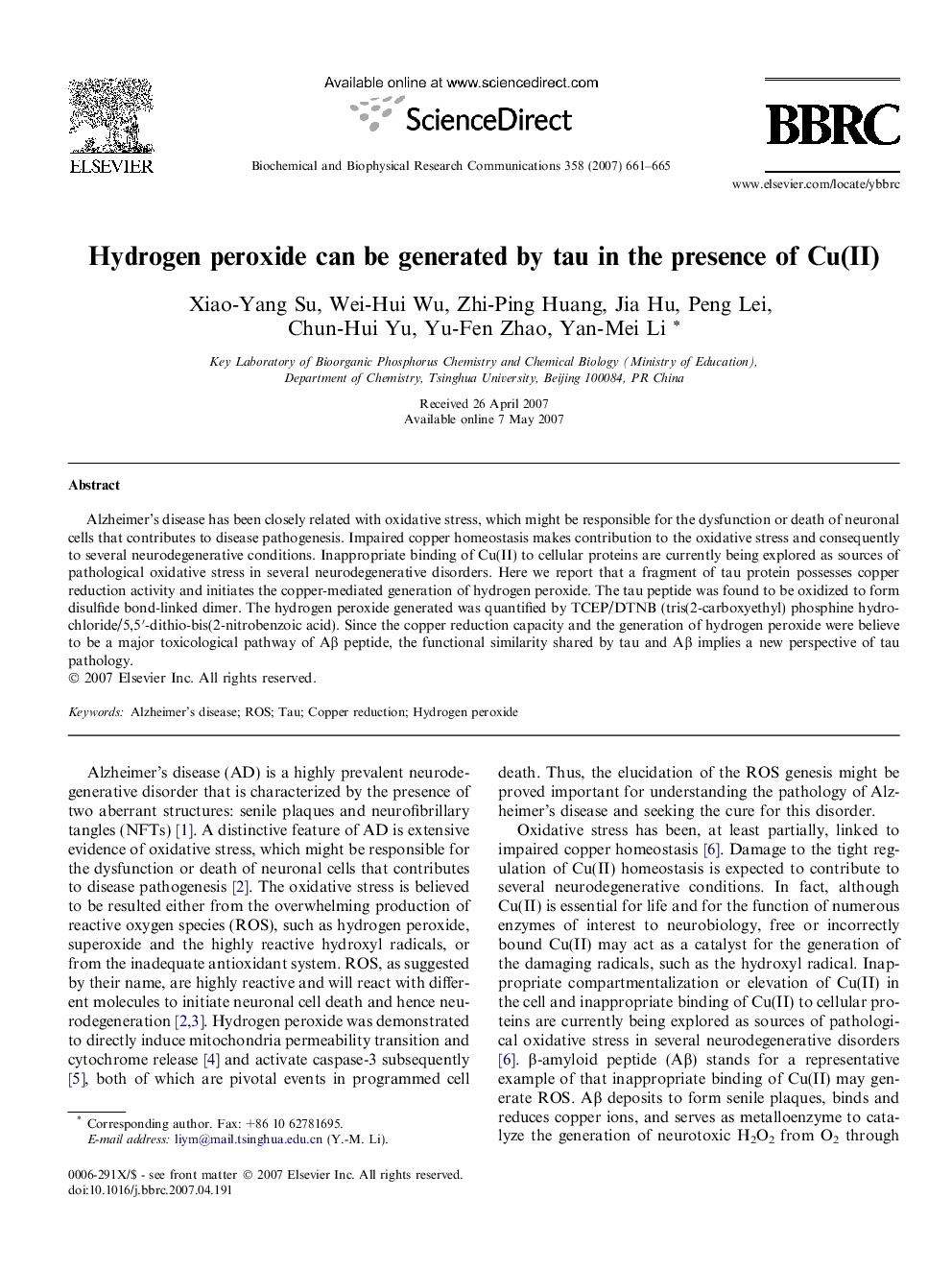| Article ID | Journal | Published Year | Pages | File Type |
|---|---|---|---|---|
| 1937744 | Biochemical and Biophysical Research Communications | 2007 | 5 Pages |
Alzheimer’s disease has been closely related with oxidative stress, which might be responsible for the dysfunction or death of neuronal cells that contributes to disease pathogenesis. Impaired copper homeostasis makes contribution to the oxidative stress and consequently to several neurodegenerative conditions. Inappropriate binding of Cu(II) to cellular proteins are currently being explored as sources of pathological oxidative stress in several neurodegenerative disorders. Here we report that a fragment of tau protein possesses copper reduction activity and initiates the copper-mediated generation of hydrogen peroxide. The tau peptide was found to be oxidized to form disulfide bond-linked dimer. The hydrogen peroxide generated was quantified by TCEP/DTNB (tris(2-carboxyethyl) phosphine hydrochloride/5,5′-dithio-bis(2-nitrobenzoic acid). Since the copper reduction capacity and the generation of hydrogen peroxide were believe to be a major toxicological pathway of Aβ peptide, the functional similarity shared by tau and Aβ implies a new perspective of tau pathology.
